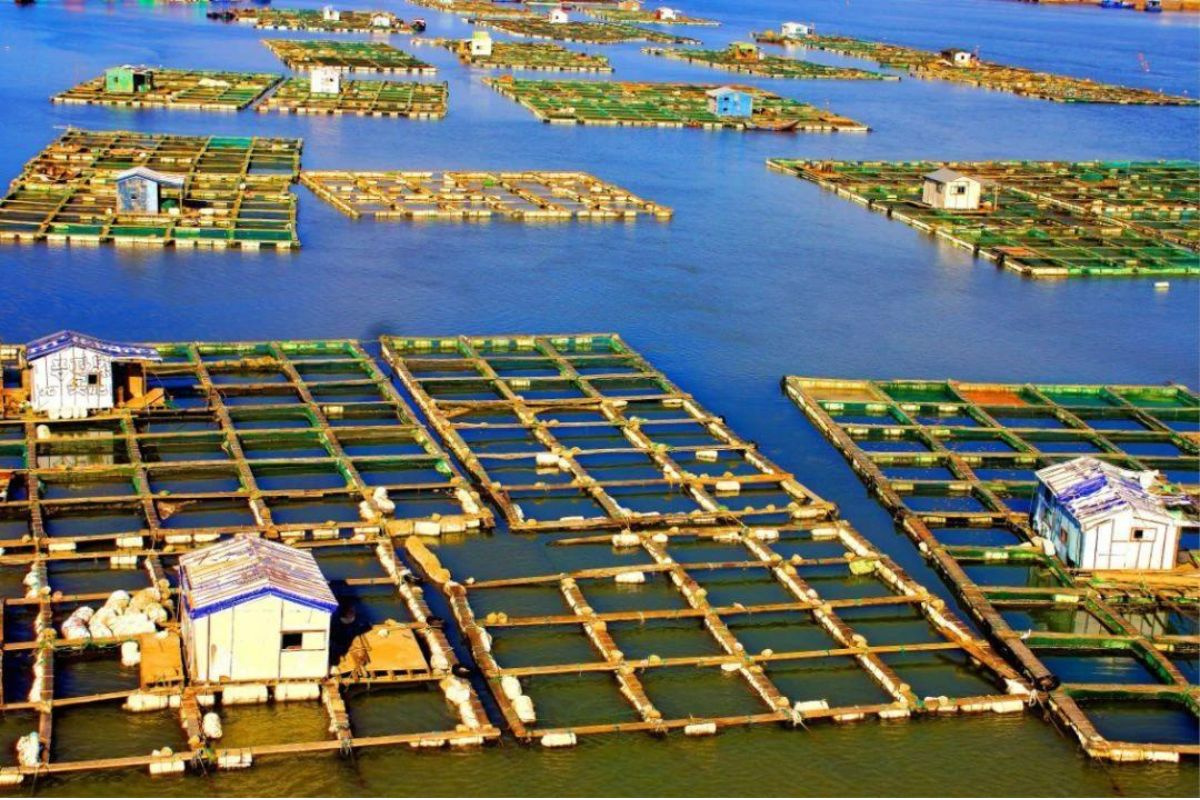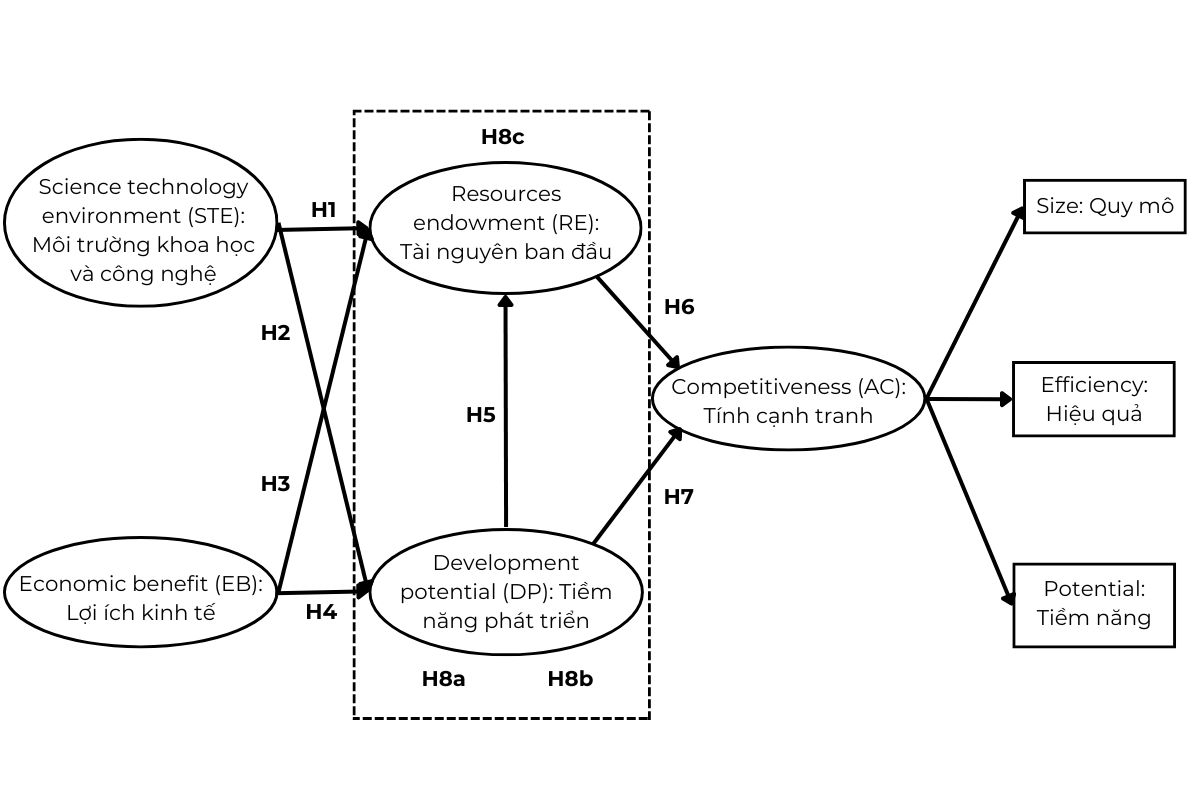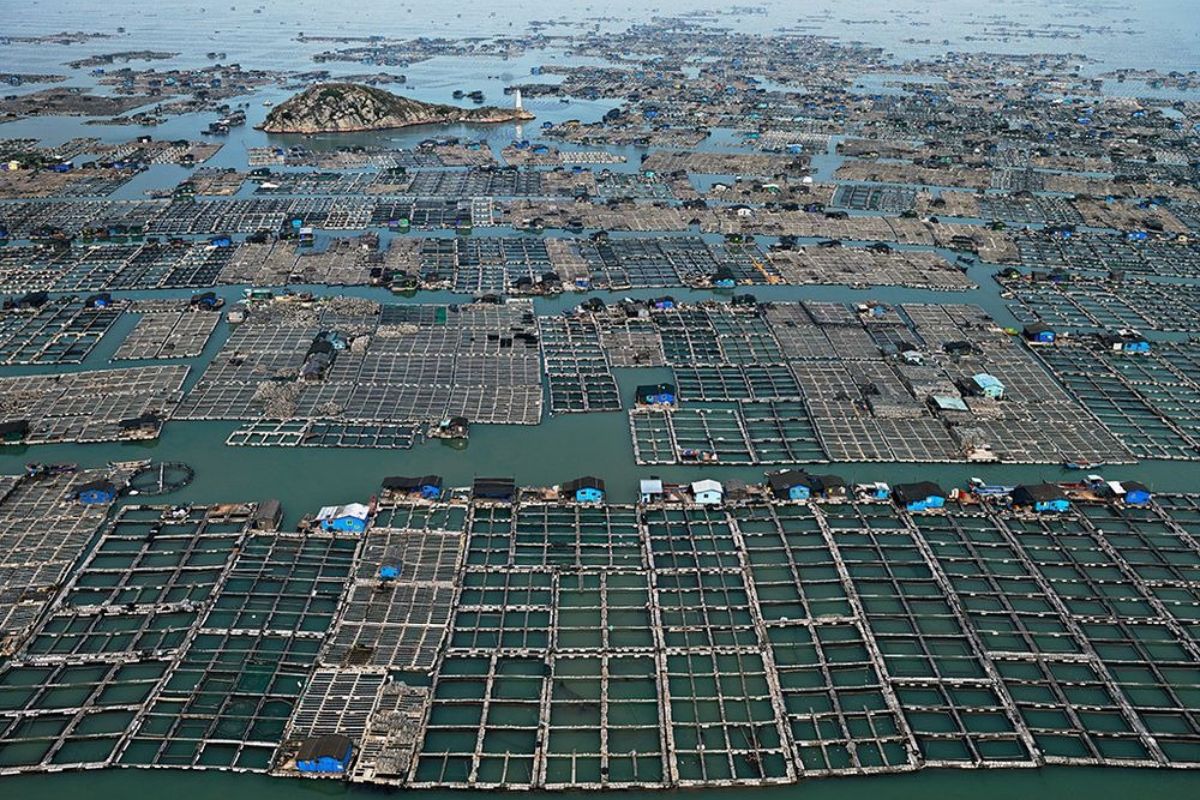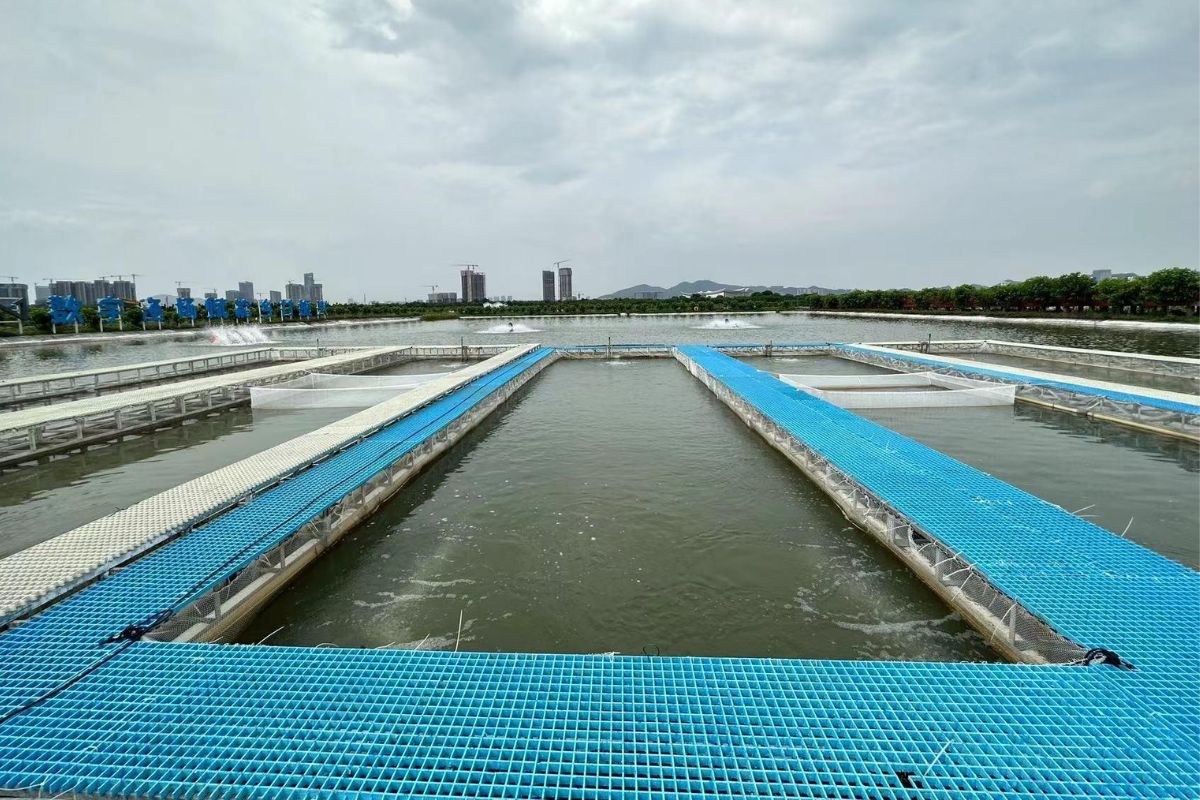What is the secret to the success of China's aquaculture industry?
In recent decades, the aquaculture industry has become an integral part of the global economy, contributing significantly to the food supply and livelihoods of millions of people around the world.

China accounts for more than 60% of global seafood production.
However, not every country has achieved as impressive results as China in this field. With over 60% of global seafood production, China has built an admirable development model that many other countries are trying to learn and apply.
So what has made China successful in the aquaculture industry? What factors have created strong competitiveness to help China become a “powerhouse” in this industry?
The article below will answer these questions, helping you better understand the secrets behind the remarkable development of the aquaculture industry in China.
 Conceptual model of aquaculture competition mechanism.
Conceptual model of aquaculture competition mechanism.
Building a Competitive Model in China's Aquaculture
Porter's Diamond Model
Competition in the aquaculture industry is not simply competition between businesses but also includes confrontation in resources, technology, and the ability to meet market demand.
An important tool for competitive analysis is Porter's diamond model, which helps understand how factors such as resources, demand, supporting industries, and business strategy interact.
This model is expanded and adjusted to suit the specific characteristics of the aquaculture industry, especially when applied to the context of China, where competition is high between enterprises and between provinces within the country.
The extended diamond model and its application in the Chinese seafood industry
Building on established models such as Porter's Diamond and the Groundings-Enterprises-Markets (GEM) model, the researchers developed an "extended diamond model" that fits the unique characteristics of aquaculture.
The extended diamond model, in addition to considering fundamental factors such as resources, markets, and technology, also includes specific factors such as government policy, business environment, and socio-cultural factors.
In the Chinese context, the model has been adapted to take into account the country’s unique factors such as the large size of its provinces, differences in natural conditions, and local policies. The application of the model has helped China better understand its own advantages and challenges, and thus develop a suitable development strategy.
China: Lessons from success in aquaculture
China is a global aquaculture powerhouse, accounting for more than 60% of global production. Its rapid growth from a 74:26 ratio between aquaculture and capture fisheries production in 2015 to 80:20 in 2020 is testament to its dominance. To understand the drivers of this success, researchers applied the scaling diamond model to China’s aquaculture industry.
By examining the complex relationships between factors such as resources, technology, infrastructure, market conditions, government policies and business strategies, the study aims to uncover the key factors that have propelled China to the forefront of aquaculture. The findings provide valuable insights for other countries seeking to replicate China’s success and build sustainable aquaculture industries.
Reasons for the success of aquaculture in China
Abundant resources
China has a vast land area with many rivers and seas, providing an ideal environment for aquaculture. Abundant water and land resources and abundant human resources have laid a solid foundation for the industry. The combination of natural resources and high-tech application capabilities has made China not only a leader in output but also in the quality of aquatic products. In addition, these resources help China maintain high production, reduce costs and increase international competitiveness, while opening up opportunities for the development and export of quality products.
 China is surrounded by rivers and seas, providing an ideal environment for aquaculture activities. Photo: Andrea He
China is surrounded by rivers and seas, providing an ideal environment for aquaculture activities. Photo: Andrea He
Science and technology environment
The Chinese government invests heavily in aquaculture research and technology. Modern research institutes and technology centers optimize production processes, improve productivity and quality, and reduce environmental impact. Thanks to advanced technology, China has developed new farming methods such as closed-loop recirculation systems, which increase production and promote sustainability.
Economic efficiency
The economic efficiency of China's aquaculture industry is clearly demonstrated by its high profit margin and sustainable growth. Thanks to the effective utilization of resources and the application of modern science and technology, China has achieved impressive economic achievements. The increase in output, quality and export potential of aquatic products has contributed significantly to the country's gross domestic product (GDP). Moreover, the optimization of production costs and improvement of business efficiency have made the aquatic industry one of the sectors with the highest profit margin in China.
Development potential
With abundant resources and technological advances, China's seafood industry has great potential for future development. Production expansion and technological innovation help China maintain its international leadership. Supportive government policies and global consumption trends will continue to boost the industry, creating more jobs and improving the quality of life for its people, while strengthening China's economic position in the world.
Lessons from China and their applicability to other countries
Resource optimization and technological innovation
Availability of natural resources is the foundation for the success of Chinese aquaculture. This includes factors such as water quality, land availability and abundance of aquatic species.
However, researchers warn that relying on these resources alone is not enough to ensure sustainable growth. It is important for each country to understand its own natural, economic and social conditions to adapt lessons from China appropriately.
Technological innovation
Key to the future In the long term, science and technology emerge as the real drivers of aquaculture. Transforming innovative ideas into efficient products and processes is essential to achieving high quality growth. The study highlights that investment in research and development is vital to securing the future of the industry.
 A digital fish pond is seen in Nansha District, Guangzhou, Guangdong Province.
A digital fish pond is seen in Nansha District, Guangzhou, Guangdong Province.
Challenges and limitations of the study
While China’s successful model is a clear demonstration of the effectiveness of resource and technology optimization, there are still many challenges when applying it to other countries. Differences in geographical conditions, culture, policies and economic scale are factors that need to be carefully considered. In addition, aquaculture development must also go hand in hand with environmental protection and ensuring sustainable development, which China is also facing and trying to overcome.
The Future of Aquaculture and Sustainable Development
China’s success in aquaculture is a testament to the fact that, with the right investments in resources and technology, countries can achieve remarkable results in this field. However, to achieve sustainable development, countries need to balance economic benefits with environmental protection, and learn and adapt lessons from successful models such as China’s to suit their specific conditions. The future of aquaculture depends not only on increased production but also on sustainable management and innovative solutions to global challenges.


